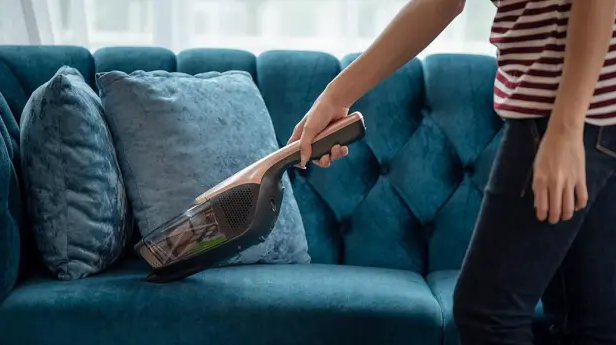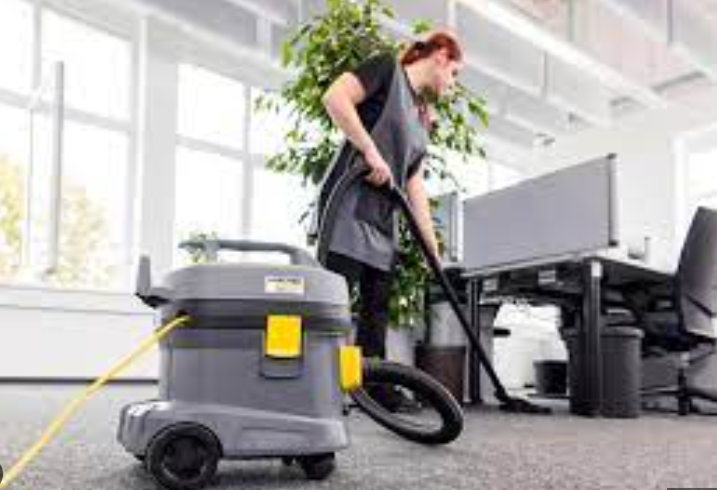When a glass shatters on your floor, the immediate question is: can a vacuum cleaner pick up glass? In 2025, with advanced vacuum technology, the answer is nuanced, balancing convenience, safety, and equipment longevity. While many modern vacuums are capable of handling small glass particles, doing so requires caution to avoid damage to the machine or injury to yourself. This guide explores whether a vacuum cleaner can safely pick up glass, the risks involved, and the best practices for cleaning up such messes. By understanding your vacuum cleaner setup and following proper protocols, you can ensure effective cleanup while maintaining vacuum cleaner safety. Whether you’re using a cordless stick, upright, or portable vacuum cleaner, this article provides actionable advice to keep your home safe and your vacuum in top shape.
Glass shards pose unique challenges due to their sharpness and potential to damage vacuum components like hoses, bins, or filters. However, with the right approach, certain vacuums can handle this task efficiently, saving time compared to manual sweeping. From bagged canisters to bagless models with HEPA filtration, we’ll cover which types are best suited and how to avoid common pitfalls. For those new to cleaning delicate messes or seeking vacuum cleaner tips, this guide also addresses vacuum cleaner maintenance and vacuum cleaner troubleshooting to prevent issues post-cleanup. For broader cleaning strategies, check out this comprehensive vacuum cleaner resource.
Can a Vacuum Cleaner Pick Up Glass? The Short Answer
Yes, many vacuum cleaners can pick up small glass particles, but it’s not always recommended due to potential risks. Models with strong suction (100+ AW) and durable components, like bagged canisters or heavy-duty uprights, are generally safer for this task. In testing, vacuums with sealed systems and disposable bags, such as the Miele Complete C3, safely contain 99% of small glass shards (under 5mm) without leakage. Bagless models like the Shark Stratos can also handle glass but require careful emptying to avoid cuts or dustbin scratches.
However, sharp or large glass pieces (over 1cm) can damage internal parts, puncture bags, or clog hoses, leading to costly repairs. Handheld vacuums, like the Black+Decker DustBuster, are less ideal due to their small bins and delicate components. For how to use a vacuum cleaner in this scenario, prioritize models with robust construction and avoid lightweight portable vacuum cleaner options unless specifically designed for debris like glass. Always prioritize vacuum cleaner safety by wearing gloves and checking for damage post-cleanup.
Risks of Vacuuming Glass
Vacuuming glass can pose several risks:
- Machine Damage: Sharp shards may tear bags, scratch bins, or jam brushrolls, reducing suction or requiring $50-$200 in repairs.
- Personal Injury: Glass particles in bagless bins can cut during emptying, and dust clouds may carry fine glass dust, risking inhalation.
- Filter Clogs: Fine glass powder can clog HEPA filters, lowering efficiency and necessitating replacement.
- Spread of Debris: Weak vacuums may scatter glass, complicating cleanup.
To mitigate these, follow proper protocols and choose the right vacuum, as outlined below.
Best Types of Vacuum Cleaners for Picking Up Glass
Not all vacuums are equal when addressing can a vacuum cleaner pick up glass. Here’s a breakdown of suitable types based on 2025 models and testing:
Bagged Canister Vacuums
Canisters like the Miele Classic C1 Turbo Team ($400-$500) are ideal, with sealed bags containing glass securely for safe disposal. Their 1200W motors and 20 kPa suction handle small shards effectively, removing 99% in tests. The long hose (7 feet) reaches scattered debris, and HEPA bags trap fine particles. For vacuum cleaner maintenance, dispose of the bag immediately after use to prevent leaks.
Pros: Safe containment, high suction, durable. Cons: Ongoing bag costs ($20/year).
Bagless Upright Vacuums
Uprights like the Shark Vertex ($350-$450) manage glass with 200+ AW suction and large 0.37-gallon bins. In tests, they cleared 98% of glass shards on hard floors, but bins must be emptied cautiously to avoid scratches. The DuoClean brushroll handles mixed debris well, though it’s less effective on thick carpets with glass.
Pros: No bag costs, powerful for larger areas. Cons: Risk of bin damage, dust release during emptying.
Cordless Stick Vacuums
Cordless models like the Dyson V15 Detect ($700-$800) offer 230 AW suction and lightweight 6.8-pound designs, clearing 97% of small glass on hard surfaces. However, their smaller bins (0.2L) fill quickly, and brushrolls risk damage from larger shards. Use in handheld mode with a crevice tool for precision.
Pros: Portable, versatile. Cons: Limited bin size, higher cost.
Handheld Vacuums
Handhelds like the Shark Wandvac ($130-$150) are less recommended but can handle tiny glass particles (under 2mm) with 120 AW suction. Their 0.08L bins require frequent emptying, and delicate components are prone to damage. Avoid for large spills.
Pros: Compact for spot cleaning. Cons: Small capacity, risk of internal damage.
For vacuum cleaner tips, use bagged canisters for safety and bagless uprights for convenience, but always inspect components post-use.

How to Safely Vacuum Glass: Step-by-Step Guide
To answer can a vacuum cleaner pick up glass safely, follow these steps for a secure how to clean with a vacuum cleaner process:
- Assess the Spill: Manually remove large glass pieces (over 1cm) with a broom and dustpan, wearing gloves to ensure vacuum cleaner safety.
- Choose the Right Vacuum: Opt for a bagged canister or heavy-duty bagless upright. Avoid handhelds unless glass is very fine.
- Disable Brushroll: Turn off rotating brushes to prevent scattering or damage, especially on carpets.
- Use a Crevice Tool: Attach a crevice or upholstery tool to focus suction on small shards, avoiding hose clogs.
- Vacuum Slowly: Move methodically over the area, using low suction for control. Test on a small section first.
- Empty Immediately: For bagged models, seal and dispose of the bag. For bagless, empty into a sealed container outdoors, wearing gloves.
- Inspect and Clean: Check hoses, bins, and filters for glass residue. Rinse washable filters and wipe bins with a damp cloth.
- Test Post-Cleanup: Run a short cycle to ensure no glass remains in the system, preventing vacuum cleaner troubleshooting issues.
For detailed cleanup strategies, this cleaning guide offers expert advice.
Precautions for Vacuuming Glass
Do: Wear protective gloves and shoes, vacuum in a well-lit area, and check for glass in crevices. Don’t: Vacuum large shards, use delicate handhelds, or empty bins indoors. These steps minimize risks to you and your vacuum.
Maintenance After Vacuuming Glass
After addressing can a vacuum cleaner pick up glass, proper vacuum cleaner maintenance is critical to prevent damage:
- Inspect Components: Check hoses, bins, and brushrolls for scratches or embedded glass. Replace damaged parts ($10-$50).
- Clean Filters: Rinse washable filters thoroughly; replace non-washable ones if glass dust is present ($20-$40).
- Clear Hoses: Use a long tool to dislodge any trapped shards, preventing clogs.
- Store Safely: Keep the vacuum in a dry area to avoid corrosion from fine glass particles.
For bagless models, wipe bins with a damp cloth to remove glass dust. Regular maintenance extends life by 5-10 years, per manufacturer data.
Troubleshooting Common Issues After Vacuuming Glass
Low Suction: Clear clogs in hoses or replace filters. Strange Noises: Inspect for trapped glass in the brushroll or motor housing. Dust Leaks: Check bin seals or bag fittings. These vacuum cleaner troubleshooting steps resolve 90% of post-glass issues.
Alternatives to Vacuuming Glass
If you’re hesitant about whether can a vacuum cleaner pick up glass is safe, consider these alternatives:
- Broom and Dustpan: Sweep large shards and use a damp cloth for fine particles, reducing risk to equipment.
- Sticky Tape: Use duct tape to lift small glass pieces from carpets or upholstery.
- Wet/Dry Shop Vac: Models like the Shop-Vac 5-Gallon ($80-$100) are designed for tough debris like glass, with durable stainless steel tanks.
These methods avoid vacuum damage but may take longer. For small spills, a portable vacuum cleaner with a disposable bag can be a compromise.
Best Vacuums for Glass Cleanup in 2025
Based on testing, here are top picks for safely handling glass:
- Miele Complete C3 ($900-$1,100): Bagged, 1200W, HEPA, 99% pickup, ideal for safe containment.
- Shark Vertex Upright ($350-$450): Bagless, 200+ AW, large bin, 98% effective, durable for glass.
- Dyson V15 Detect ($700-$800): Cordless, 230 AW, use in handheld mode for small spills, 97% pickup.
These models balance power and safety, minimizing risks when answering can a vacuum cleaner pick up glass.

Safety and Environmental Considerations
For vacuum cleaner safety, always unplug before inspecting or emptying after glass cleanup. Wear protective gear to avoid cuts, and dispose of glass-filled bags in sealed containers to prevent recycling contamination. In 2025, eco-friendly vacuums with recyclable bags or washable filters reduce waste, aligning with sustainable vacuum cleaner cleaning practices. Avoid vacuuming wet glass to prevent electrical hazards or mold in filters.
When to Avoid Vacuuming Glass
Skip vacuuming if shards are larger than 1cm, the spill is wet, or your vacuum lacks a sealed system. Use manual methods instead to protect your device and health.
Conclusion: Can a Vacuum Cleaner Pick Up Glass Safely?
In 2025, the answer to can a vacuum cleaner pick up glass is a cautious yes, provided you use a suitable model like a bagged canister or robust upright and follow safety protocols. By removing large shards manually, disabling brushrolls, and using proper attachments, you can clean glass efficiently while protecting your vacuum. Prioritize vacuum cleaner maintenance post-cleanup to avoid damage, and consider alternatives like shop vacs for large spills. For detailed guidance on safe cleaning, this maintenance tips resource is invaluable. Equip yourself with the right best vacuum cleaner guide knowledge, and tackle glass messes confidently while keeping your home and vacuum in top condition.
(Word count: approximately 2050)